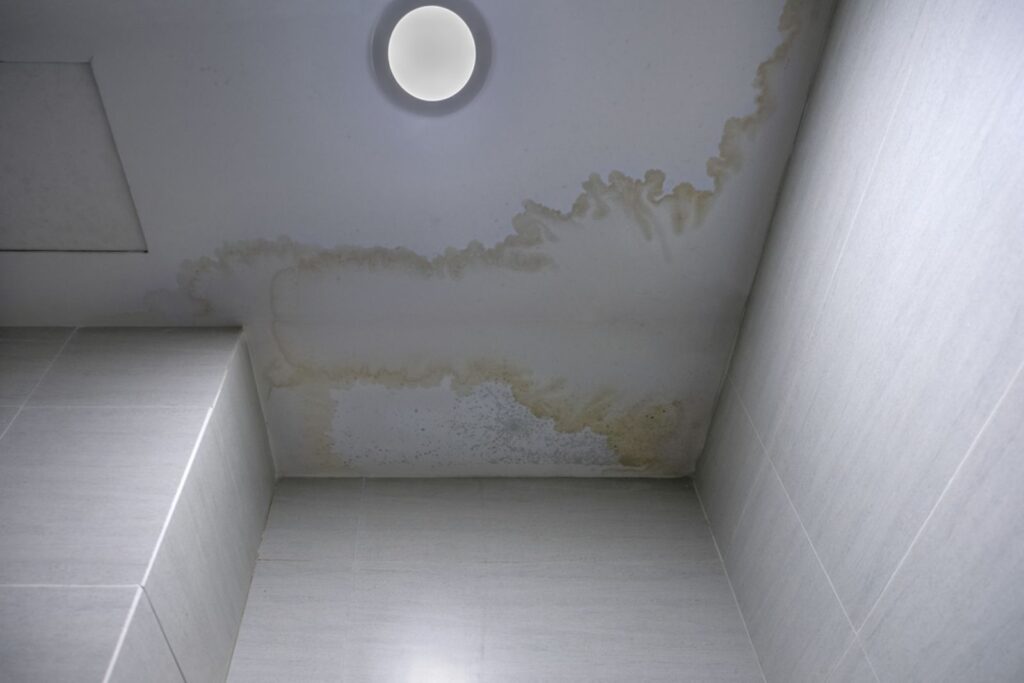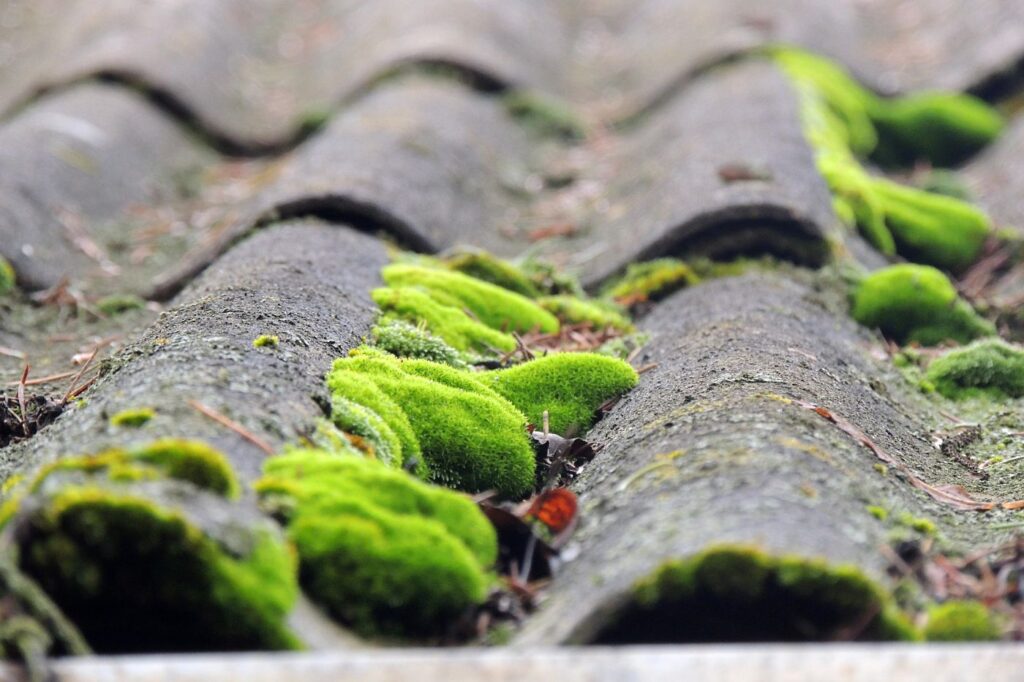Your roof is a critical shield for your home, especially in Hamilton’s often-wet climate. The frequent rainfall, high humidity, and mild temperatures create ideal conditions for moss and lichen to flourish on roofing materials that will then require a roof moss treatment.
While they might seem harmless, these growths can lead to significant damage and costly repairs if ignored. Learning to spot the early warning signs can save you considerable time, money, and stress.
The Climate Connection: Why Hamilton Roofs Are Vulnerable
Hamilton’s weather patterns provide a perfect environment for moss and lichen. With around 1,200mm of rain annually and winter humidity often exceeding 80%, roofs stay damp for extended periods. Unlike drier regions, where occasional moss might be manageable, these conditions allow organisms to thrive year-round, making roofs susceptible to ongoing growth.
Moss and lichen aren’t just surface dwellers; they actively degrade roofing materials. Moss acts like a sponge, keeping surfaces constantly wet, which promotes rot and decay. Its root-like structures (rhizoids) can penetrate under and between roofing components, gradually lifting and separating them. Lichen, on the other hand, produces acids that slowly dissolve the mineral elements in roofing materials, weakening their integrity over time.
Addressing these issues early is crucial. What starts as a relatively inexpensive treatment can quickly escalate to an expensive roof replacement if left unaddressed. Proactive intervention and maintenance for your home is always more cost-effective than waiting for visible damage to occur.
Understanding the Culprits: Moss vs. Lichen
To effectively identify potential problems, it helps to know what the difference is between moss and lichen.
Moss is a simple plant that reproduces via spores. It typically appears as a thick, cushion-like growth, ranging from bright to dark green. Moss thrives in moist, shaded areas and can hold many times its weight in water. On roofs, it commonly establishes itself in valleys, along gutters, and on north-facing slopes that receive less direct sunlight.
Lichen is a composite organism, a symbiotic relationship between fungi and algae or cyanobacteria. It forms flat, crusty patches that can be grey, white, yellow, orange, or light green. Lichen tolerates more direct sunlight than moss and often appears as an early coloniser. Though slower-growing than moss, it’s particularly damaging due to the acids it produces, which chemically break down roofing materials.
Identifying the Threat: 8 Key Warning Signs
Detecting moss and lichen nice and early can prevent more severe issues. Here are some common indicators you can watch for:
1. Subtle Colour and Surface Changes
The initial signs often appear as slight discolouration, which homeowners might mistake for dirt or natural weathering.
- Moss Indicators: Look for patches of green that appear fluffy or velvety, even from a distance. Early growth might look like a green “dusting” before developing into thicker mats. Pay attention to areas where the roof meets walls, around chimneys, and in valleys.
- Lichen Indicators: Lichen presents as flat, crusty patches in various colours. Grey and white lichen can blend in, making them harder to spot initially. Look for “stained” or mottled areas. Brighter orange or yellow lichen indicates a more established presence.
- Hamilton-Specific Considerations: Due to prevailing westerly winds and rain, north and east-facing roof slopes in Hamilton often show the first signs of growth. Areas sheltered by trees or buildings are also highly susceptible, as they tend to remain damp for longer periods.
2. Alterations in Roof Material Texture
As colonies mature, they begin to visibly change the physical texture of your roof.
- Surface Roughening: Smooth materials, such as metal or tile, may become noticeably rougher as lichen acids etch the surface, creating more areas for moisture retention and further growth.
- Raised or Lifted Edges: Moss growth can create visible raised areas, especially where shingles or tiles overlap. Straight lines along roof edges might appear wavy or uneven.
- Soft or Spongy Areas: While requiring closer inspection (and caution), heavily moss-laden areas can feel soft or spongy underfoot, indicating material degradation.
3. Structural Damage to Roofing Materials
This category includes some of the most serious early indicators.
- Lifting and Separation: As moss thickens, it physically pushes against and lifts roofing materials. From the ground, you might notice shingle edges not lying flat or visible gaps where materials should overlap. These openings allow water to penetrate.
- Cracked or Brittle Materials: Lichen’s acidic action can cause roofing materials to become brittle. Look for small cracks or chips in areas with heavy lichen, particularly along exposed edges.
- Granule Loss: On asphalt shingles, excessive granule loss (bare or thin patches) can signal that there is lichen damage. These granules protect against UV rays, so their loss accelerates deterioration.
4. Compromised Water Management
Moss and lichen can significantly disrupt your roof’s drainage system.
- Gutter Blockages and Overflow: Debris from moss and lichen can quickly clog your guttering system, causing overflow. Look for green or grey material accumulating in gutters, or notice if sections overflow during moderate rain.
- Unusual Drainage Patterns: Heavy moss can alter water flow. You might see new drip patterns, water staining on walls below roof edges, or areas where water pools instead of draining freely.
- Ice Dam Formation: In colder conditions, moss-affected areas can retain moisture, leading to localised ice dams that prevent proper drainage when temperatures drop below freezing.

5. Interior Warning Signs
Issues inside your home can also point to roof problems.
- Roof Space Moisture and Condensation: Regularly check your roof space for increased moisture, condensation on decking, damp insulation, or a musty smell. Moss-damaged roofing allows more moisture to seep in.
- Water Stains on Ceilings: While indicating more advanced damage, water stains or rings on interior ceilings often correspond to heavy moss growth directly above, signalling a compromised weather barrier.
- Mould Growth: Increased moisture penetration from a damaged roof can contribute to indoor humidity issues and subsequent mould growth, especially in poorly ventilated areas.
6. Pest and Wildlife Activity
Certain animal behaviours can indirectly signal roof issues.
- Increased Bird Activity: Birds, especially native species, often use moss for nesting. If you observe birds frequently visiting your roof or pulling at materials, investigate those areas for moss.
- Insect Populations: Moss creates microhabitats for various insects. An increase in spiders around roof edges or flying insects emerging from roof areas, particularly after rain, might indicate moss colonies.
- Plant Growth in Gutters: Seeds carried by wind or birds can germinate in the moist, organic matter accumulated in moss-clogged gutters. Small plants growing in your gutters are a clear sign of a problem.
7. Seasonal Changes and Weather Response
How your roof responds to different seasons can reveal hidden issues.
- Winter Appearance: Moss and lichen become more prominent and visible during Hamilton’s wet winter months when they are actively growing. Areas that seem clear in summer might show significant growth by late winter.
- Post-Rain Observations: The 24-48 hours after heavy rain are ideal for detection. Moss will appear greener and more prominent when saturated, making colonies easier to spot.
- Frost Patterns: During occasional frosts, moss-covered areas may show different frost formation patterns or stay frost-free longer due to retained moisture.

8. Long-Term Deterioration Patterns
Observe how different sections of your roof are aging.
- Accelerated Weathering: Areas with moss and lichen growth will typically show more advanced weathering, fading, or general deterioration compared to clean sections of similar age and exposure.
- Edge Deterioration: Roof edges and transitions are particularly vulnerable. Look for loose flashing, failed sealants, or materials pulling away from attachment points.
When to Seek Professional Guidance
While many early warning signs can be spotted from the ground, a professional assessment will offer some crucial advantages. Experts use specialised equipment like high-resolution cameras, moisture meters, and safe roof access techniques to identify issues not visible from the ground.
Consider a professional assessment if you notice multiple warning signs, if your roof is over 15 years old, if you have a complex roof design with many valleys, or if previous treatments haven’t been fully effective.
The Urgency of Action
In Hamilton’s climate, moss and lichen problems don’t just stay the same; they accelerate rapidly once established. A small patch of moss can double in size within a single winter season especially under humid conditions. Lichen, though slower, causes cumulative damage that worsens over time. Addressing these issues promptly can prevent a minor maintenance task from becoming a major, expensive repair.